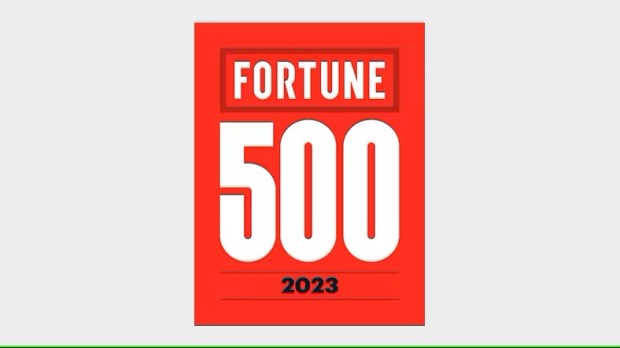How the Fortunes of the Fortune 500 Have Changed Since 1996

The 69th annual Fortune 500 list was published earlier this summer, and most people paid it little mind. What was once considered a coveted benchmark for “making it” is now just another list of companies ranked by reported annual revenues.
Access to real-time information related to the ups and downs of publicly traded company stock performance — combined with quarterly earnings calls and business intelligence tools to crunch the numbers, analyze trends and act on them — has muted its importance.
More interesting than its annual rankings is the relative performance of the companies on the list over the thirty years since the evolution of the U.S. economy from its analogue days in 1954, when the list first appeared, to the internet age starting at about 1996. It is over that period of time — from 1996 to 2023 — that the efficiencies gained when moving from only physical and paper to computers and the internet, smartphones, apps and the cloud were realized.
In 1996 the total revenue of all Fortune 500 was$4.7 trillion. By the end of 2022, that number had more than tripled to $18.1 trillion, representing a 5.2% annual rate of growth per year. GDP growth over that same period was 4.4%. When adjusting revenues for the impact of inflation over that same period (2.4%) the Fortune 500 outperformed GDP by 21.7% and inflation by 102.7%.
Since 1996, the biggest movers strictly by revenue ranking come from the healthcare, information services and wholesale trade sector. Unsurprisingly, the largest decreases over that same period of time are among manufacturing, utilities, and professional services.
Revenue rankings tell only part of the story. Examining the list by the share of revenue across all of the Fortune 500 companies — both by company and by industry segment — tells a slightly different, maybe even unexpected story.
Amazon, which was #482 on the Fortune 500 list in 2002, is now second behind Walmart, accounting for 2.8% of all revenues generated by the Fortune 500 companies. Walmart accounts for 3.4%.
Mass Merchants, as a category, have also performed very well, with the Top 4 — Walmart (#1), Amazon (#2), Costco (#12) Target (#33) — each with revenue shares well over 1.0%.
Big Tech Firms have climbed to the top or near the top of Fortune 500 list, and mostly over the last 10 years. Amazon (#2), Apple (#4), Alphabet (#8), Microsoft (#13), and Meta (#31) each have well over 1.0% revenue shares.
Health Insurers have also outperformed other segments, with revenue shares of those on the Fortune 500 in the 1-2% range. UnitedHealth (#5) and CVS, which owns Aetna, (#6) each have 1.8% of revenue across the list.
Banks tell a different story. Many of the larger banks, like J.P. Morgan, Bank of America, Citi and Wells, continue to hold top spots, but are losing revenue share across the Fortune 500 list as internet-native or digital-first companies deliver outsized revenue gains.
The impact of technology on an industry sector is perhaps most pointed when looking at the automobile sector. GM, which held the top spot in 1996, is now at #21, dropping 11 places since 2018. Tesla, at #50, moved 190 spots up the list over the same period.
All of these shifts are driven by innovations and innovators who have embedded digital into their businesses — or whose businesses used the internet and new technology to change the status quo.
Mass merchants show the impact of retail consolidation and the decline of physical retail overall; the rise of Amazon is a nod to the embrace of an online platform that has expanded beyond retail and embraced third-party sellers.
Big Tech has created platforms and operating systems that power the digital economy, the devices that connect to the internet and the ecosystems that eliminate the friction of discovery and transacting. Card networks and the payments ecosystem create global acceptance of digital payments without which digital commerce would stall. Health insurers have acquired (or been acquired) and are using new delivery models, apps and digital portals to optimize the healthcare delivery model for providers and patients. Automobile OEMs have been forced to keep pace with a new entrant that has built a state-of-the-art chassis around a software platform and a business model that takes the sale directly to the consumer. Banks, which represent the backbone of the most resilient financial system in the world, are being challenged by technology players, including Big Tech firms, which use banks in the background to deliver banking, payment and credit services to their users.
That simply makes the sectors in decline an opportunity to leverage technology and the innovators using it, to get their digital transformation mojo revved up. Their fortunes over the next thirty years will depend on it.
